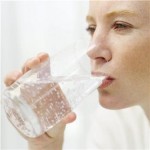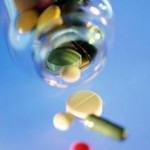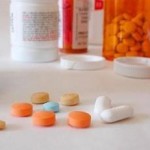Drugs in drinking water: danger or distraction?
 Over the last decade a dozen or more studies in the U.S., Europe, and Australia have found trace amounts of pharmaceutical drugs in surface water, wastewater, groundwater and to a lesser degree in drinking water.
Over the last decade a dozen or more studies in the U.S., Europe, and Australia have found trace amounts of pharmaceutical drugs in surface water, wastewater, groundwater and to a lesser degree in drinking water.
In 2008, the Associated Press ran a series of well-researched articles on the findings of these studies, which brought the issue to public attention. They found that drugs have been detected in 24 major metropolitan areas, from California to New Jersey. Of the 62 cities that had tested for pharmaceuticals, only Albuquerque, New Mexico, Austin Texas, and Virginia Beach, Virginia, reported no pharmaceuticals had been found in drinking water.
Obviously, with only 62 cities even testing for pharmaceuticals in the water supply, most cities around the country can’t say whether drugs are or are not in the water. In Texas, only Austin, Arlington, El Paso, and Fort Worth have tested their drinking water for pharmaceuticals.
are or are not in the water. In Texas, only Austin, Arlington, El Paso, and Fort Worth have tested their drinking water for pharmaceuticals.
Naturally, the detection of any amount at all, and the lack of testing ignites anxiety in the general public, while the growing number of studies showing trace amounts over the past decade has raised the concerns of drinking-water regulators, governments, water suppliers and the public over potential human health risks from exposure to these medications.
Since the AP series more studies have been done, convincing the World Health Organization to analyze the available data to determine what is known and what is not known and what needs to be done. Their report was published earlier this year.
In short, the study looked at:
- · How much of these pharmaceutical compounds are in our drinking water?
- · Does the amount of pharmaceuticals found in municipal drinking water pose a threat to human health?
- · Should municipalities test for pharmaceuticals in the water supply?
- · What should be done about it?
 A question people often ask is how are these pharmaceuticals getting into our water systems? The answer is us. People and animals take all kinds of medications both in prescriptions and in over-the-counter drugs. The result is human drugs are discharged into the waste water system, and animal drugs are discharged into ground, which seep into groundwater. Of course all that water is filtered and treated many times before it gets to the water supply, where it is again filtered, tested and treated before it becomes drinking water.
A question people often ask is how are these pharmaceuticals getting into our water systems? The answer is us. People and animals take all kinds of medications both in prescriptions and in over-the-counter drugs. The result is human drugs are discharged into the waste water system, and animal drugs are discharged into ground, which seep into groundwater. Of course all that water is filtered and treated many times before it gets to the water supply, where it is again filtered, tested and treated before it becomes drinking water.
Written by Johanna Oosterwijk

